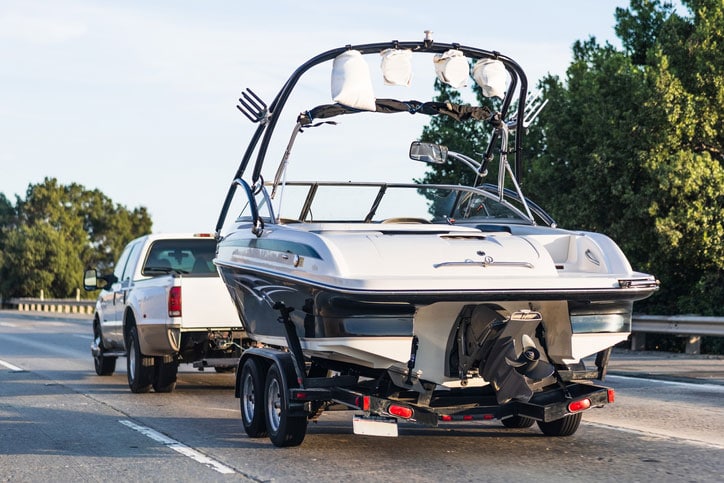If you’ve never driven with a trailer attached, it can feel intimidating. You’re more than doubling the length of your vehicle, so it takes some practice to get the rhythm down. Thankfully, it’s not hard to drive with a trailer if you have a foundation of proven techniques. Check out our beginner’s guide to driving with a trailer attached.
Practice Driving with a Trailer before You Hit the Road
Driving with a trailer feels different than driving a vehicle by itself. The weight distribution and pedal pattern is different, so you’ll want a little time to practice. Take a few laps around the neighborhood or in an empty parking lot to familiarize yourself with the feel of the trailer. Repeat this until you feel confident enough to hit the main roads.
Prepare to Make Wide Turns
You can’t make sharp turns with a trailer attached like you would in your regular vehicle. You run the risk of jackknifing, where the trailer and vehicle fold like a pocketknife. You could also roll over due to a quick shift in weight, or you may simply get stuck making the turn. Use your turn signals well in advance, and prepare to stay as far outward as possible when making a turn.
Gradually Speed up and Slow down
Because of the added weight, your vehicle won’t be able to stop and start as quickly as it usually does. If you change speeds too fast, the trailer may slam into the back of your vehicle. It’s best to keep a steady pace, whether you’re trying to accelerate or decelerate.
You may find yourself using the foot pedals less often because the weight of the vehicle creates momentum. Use this to your advantage to maintain a consistent speed and put less strain on your brakes/engine.
Stay Multiple Car Lengths behind Other Drivers
It takes longer to come to a full stop, and you need space to do just that. As you travel down the road, make sure there are several car lengths between you and the vehicle in front of you. Be aware of vehicles on your sides as well because they may move into that open zone. If you think they’re about to pass, you may want to ease off the throttle a bit to give them room and give yourself space to slow down.
Use Your Mirrors to Monitor the Trailer
Keep an eye on your trailer using your side and rear-view mirrors. If you’re using an open car hauler, you’ll want to monitor the load and the trailer itself. Make sure the trailer isn’t moving too drastically from side to side, and watch for any loose objects that may come off the trailer. If you see something that doesn’t look secure, pull over to the side of the road and inspect the load more closely.
Avoid Heavy Traffic When Possible
In a heavy traffic situation, you need to brake and switch lanes fast. This may be difficult as a novice trailer driver. If possible, travel during the times of the day when there will be limited traffic on the road. You may also try an alternative route that reduces the traffic congestion. Even if that adds an hour to your travel time, it will be worth not having to stress about weaving around in an extended vehicle.
Think about Where You’re Going to Park When You Need to Stop
Most parking spaces aren’t designed for trailers. You should think about this when planning your route. If you want to stop somewhere to eat, use the restroom or take a rest, make sure there is ample parking somewhere on the lot. You may need to park toward the back of the parking lot to leave enough room for your vehicle and the trailer. Some rest stops have designated parking for moving trucks and semis, so you could utilize those when applicable.
This rule also applies to any tunnels or drive-thrus you want to go through. Be aware of the height of your trailer because it may not fit everywhere your vehicle fits. Most tunnels are going to be large enough for an 18-wheeler, so you should be fine driving on the road. You still need to be aware of your dimensions as you drive from place to place.
Flash Your Hazards and Pull over as Needed
If you feel uncomfortable at any point, don’t hesitate to pull over. Your safety is always the top priority. Put your hazard lights on and gently pull over on the shoulder or in a nearby parking lot. Take a break, reroute if necessary, and then continue driving with a trailer attached.

